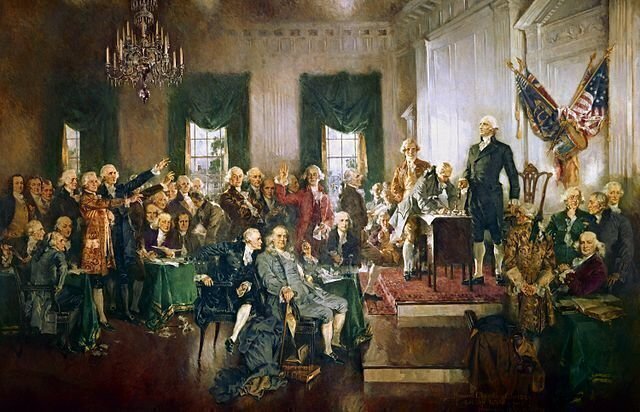
A government crippled by division. An economy spiraling downward. Armed protesters confronting law enforcement in the streets. Enemies abroad threatening the young nation.
Into this world the United States Constitution was born in September 1787. But it took until June 21, 1788 for the document to be adopted when New Hampshire became the ninth state to ratify the Constitution.
The Constitutional Convention, convened by Congress to address the flaws of the Articles of Confederation, had crafted an entirely new framework for governance the previous September. After all, the Articles had proven incapable of addressing the problems facing the new nation: crushing war debts, piracy in the Mediterranean, rebellion in rural Massachusetts, and more. Something had to give.
Now, emerging from a summer of disagreement and compromise, the delegates left Philadelphia only to begin a new fight for ratification in the states.
Nine states were required to ratify the Constitution; the Federalists wasted no time in collecting votes. Four small states—Delaware, New Jersey, Georgia, and Connecticut—quickly assembled their state Conventions and ratified the document. They had the most to lose if the national government remained weak, for they lacked the military and economic strength to stand alone in the world.
Pennsylvania was the first big victory for the Federalists, yet it was not a sure bet: Anti-Federalists held enough sway in the state assembly to prevent a vote for a ratifying convention. In a dramatic move, the Anti-Federalists were literally dragged to the statehouse and a vote was cast as they pounded on the doors to escape. The convention was called and, after some debate, the Constitution was ratified on December 12, 1787.
Undeterred, the Anti-Federalists soon began fierce battles in the remaining state conventions, especially those in New York, Massachusetts, and Virginia, states where they retained enormous support. These were also among the most powerful states, whose support would be vital to the strength of the Constitution.
In Massachusetts, several famous Patriots, including John Hancock and Sam Adams, lead the Anti-Federalist attack. They railed against a strong government and attacked their colleagues for exceeding their authority to scrap the old government. But with the promise of a Bill of Rights to restrain federal power, the Federalists won the day and ratified the Constitution on February 6, 1788.
In New York, Alexander Hamilton, James Madison, and John Jay published rebuttals to questions and concerns about the proposed government. These three men faced off against a colorful assembly of opponents, including the stoic Robert Yates. Their intellectual duels, captured in The Federalist Papers, helped to flesh out the Constitution’s principles and practices. Still, ratification remained elusive.
So, too, in Virginia, Patrick Henry’s passion and eloquence helped stem the tide of Federalist success. But while New York and Virginia held the line against the new Constitution, other states acquiesced, with Maryland and South Carolina becoming the seventh and eighth states to ratify the document.
It was ultimately New Hampshire that pushed the Constitution across the finish line.
The Federalists, having managed to push up the state convention to February, were concerned that the Anti-Federalists held an unbreakable majority. So they called for an adjournment of the convention until June. In that time, debates in the press took a toll on the Anti-Federalists, winnowing their numbers and draining public support.
By the time the convention reconvened in June, the decision was a forgone conclusion. On June 21, 1788, New Hampshire became the critical ninth state to ratify the Constitution. That day, the Constitution was officially adopted, and the new government officially started operating on March 4, 1789.
Louis Gentilucci is an intern at the National Constitution Center.







